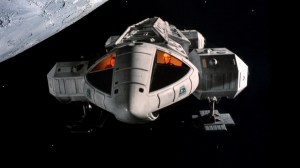The Webb Space Telescope has been in full commission for a week, already returning some of the highest-quality pictures we’ve seen of the furthest reaches of space. Not only that, but the observatory has also already taken a snapshot of the oldest galaxy ever discovered.
Videos by ComicBook.com
In a study published Tuesday, researchers showed of GLASS-z13, a galaxy some 13.5 light years away. Because of its distance, the Webb Space Telescope captured the light emanating from the galaxy as it looked 300 million years after the Big Bang. The discovery of GLASS-z13 sets it apart from the previous record-hodler, GN-Z11, which was captured by the Hubble Space Telescope in 2016. GN-Z11 is 13.4 billion light years away.
The group’s full study can be found here.
“With the Webb telescope achieving better-than-expected image quality, early in commissioning we intentionally defocused the guiders by a small amount to help ensure they met their performance requirements,” Webb scientist Neil Rowlands said in a NASA blog post earlier this month. “When this image was taken, I was thrilled to clearly see all the detailed structure in these faint galaxies. Given what we now know is possible with deep broad-band guider images, perhaps such images, taken in parallel with other observations where feasible, could prove scientifically useful in the future.”
Around that same time, NASA administrator Bill Nelson confirmed the images being released to the public are the deepest look into space, further than what we’ve ever seen before.
“If you think about that, this is farther than humanity has ever moved before,” Nelson said. “And we’re only beginning to understand what Webb can and will do. It’s going to explore objects in the solar system and atmospheres of exoplanets orbiting other stars, giving us clues as to whether potentially their atmospheres are similar to our own.”








